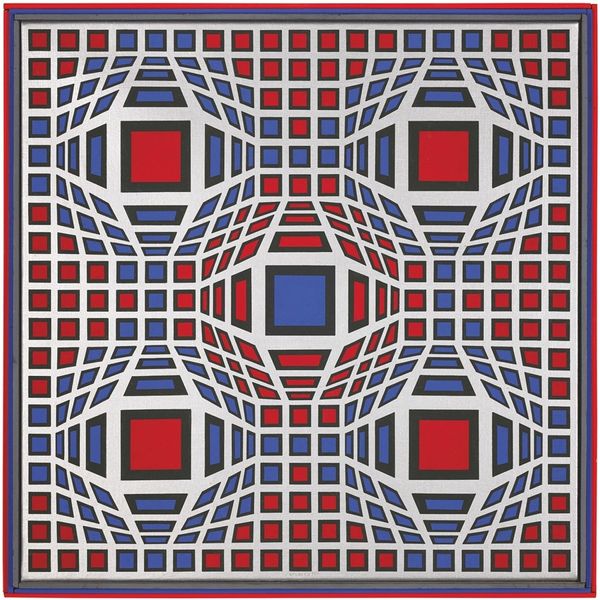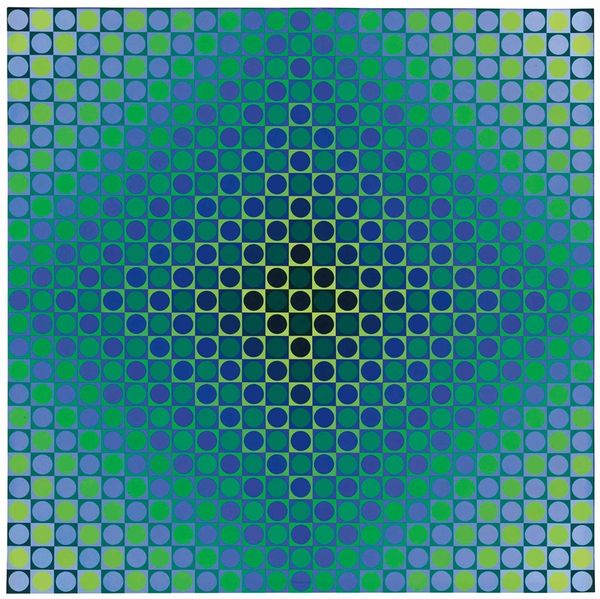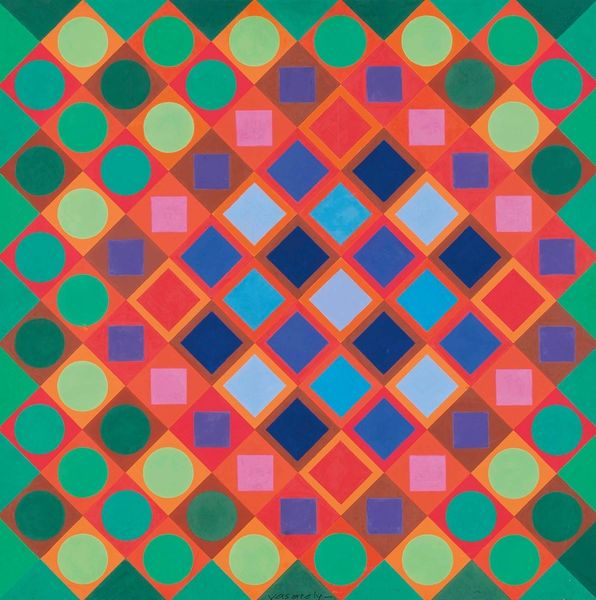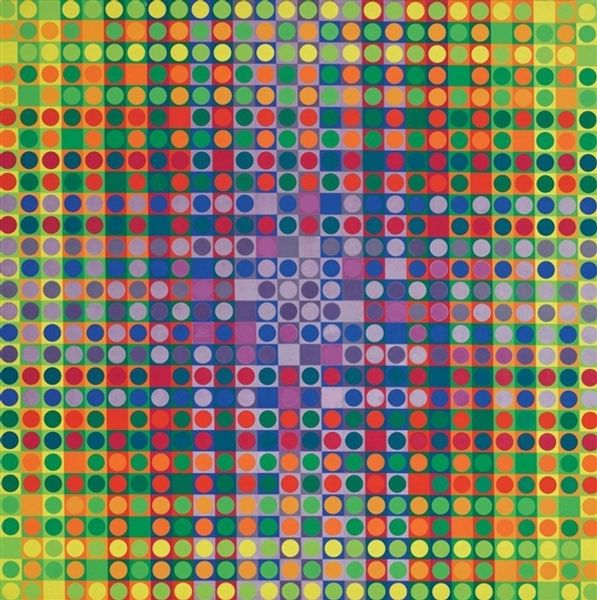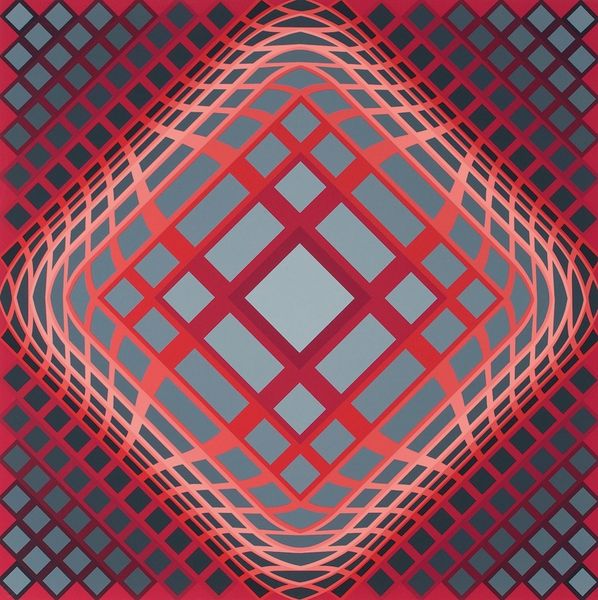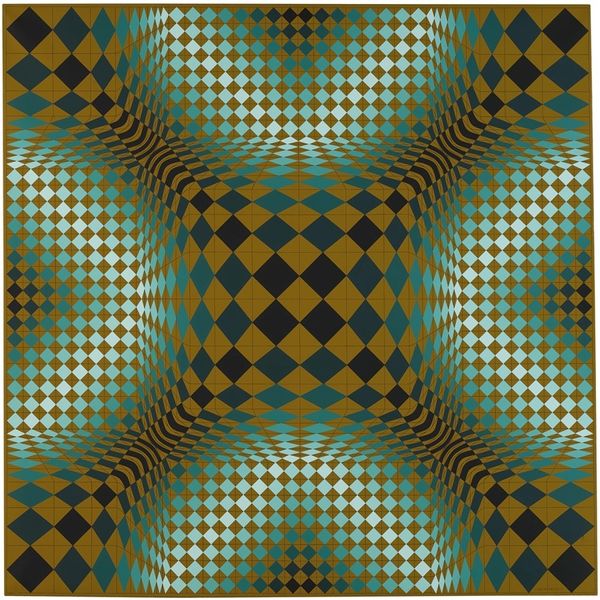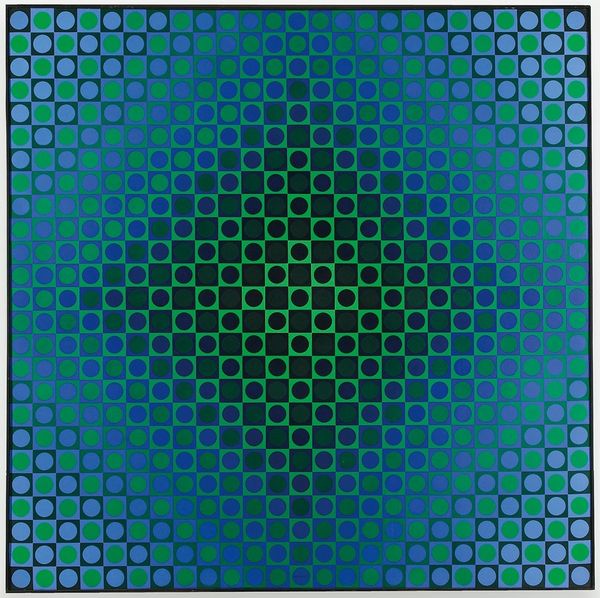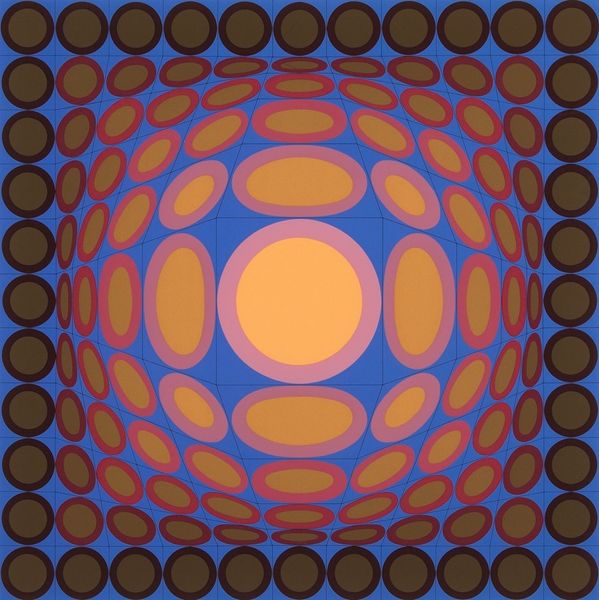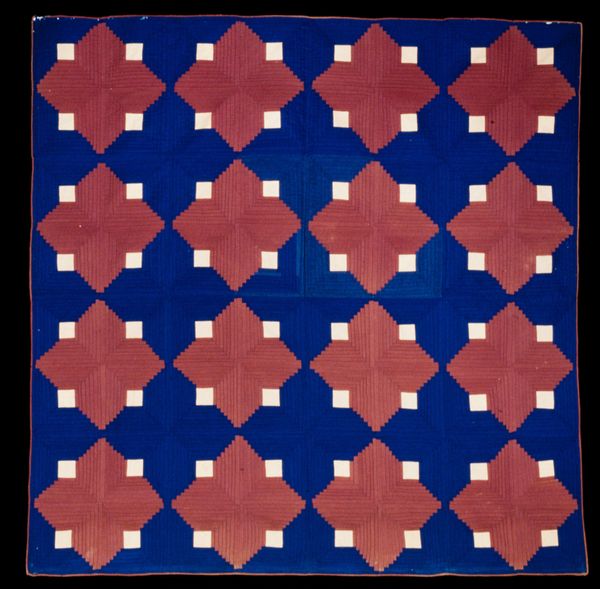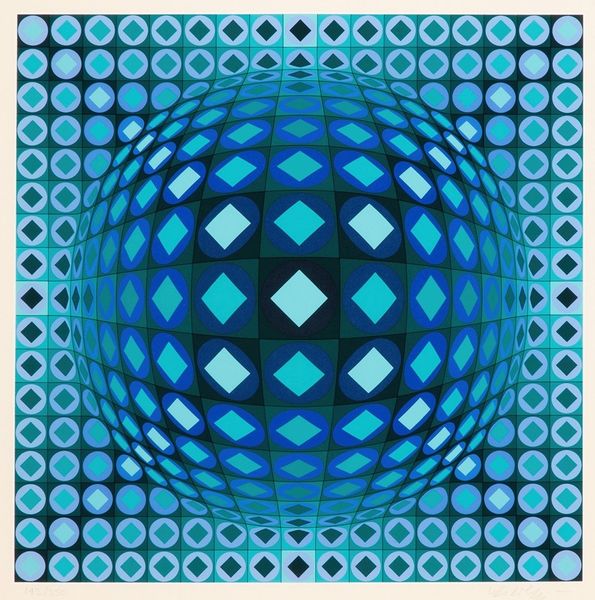
acrylic-paint
#
op-art
#
acrylic-paint
#
abstract
#
geometric pattern
#
abstract pattern
#
geometric
#
abstraction
Copyright: Modern Artists: Artvee
Editor: Here we have Victor Vasarely's "Ion-Halo" from 1974, made with acrylic paint. The geometric composition creates a vibrant pattern, almost pulsating, like a field of interconnected cells. It really plays tricks on your eyes! How do you interpret this work, considering its historical context? Curator: This piece resonates deeply with the socio-political climate of the 1970s. Vasarely's Op Art sought to democratize art through accessible geometric forms, reflecting the era's aspirations for social change. This period witnessed the rise of consumer culture and technological advancement, a context Vasarely engaged with critically by creating art that was visually engaging and reproducible on a mass scale. Editor: Interesting. I see the potential for mass production and accessibility in his art. What do you think of the role of color? Curator: The contrasting colors in "Ion-Halo" are strategic. It provokes visual instability and plays with our perception, mirroring the anxieties of a society grappling with rapid transformation. Do you see any relationship to how artists used color to reflect shifting societal norms or challenge power structures in that decade? Editor: Now that you mention it, I see the connection with movements critiquing the establishment! Color becomes more than just aesthetic, it embodies a statement of intent and resistance. It invites us to reconsider art's role as an agent of change. Curator: Exactly. Art of this era challenged established power structures, sparking important cultural conversations that continue to influence contemporary practices. Vasarely offers more than optical illusion—it is an act of questioning societal norms and engaging audiences in conversations about power. Editor: I learned so much about how art intersects with social commentary. The background really helps. Curator: Precisely. Understanding this helps see beyond simple aesthetics.
Comments
No comments
Be the first to comment and join the conversation on the ultimate creative platform.
